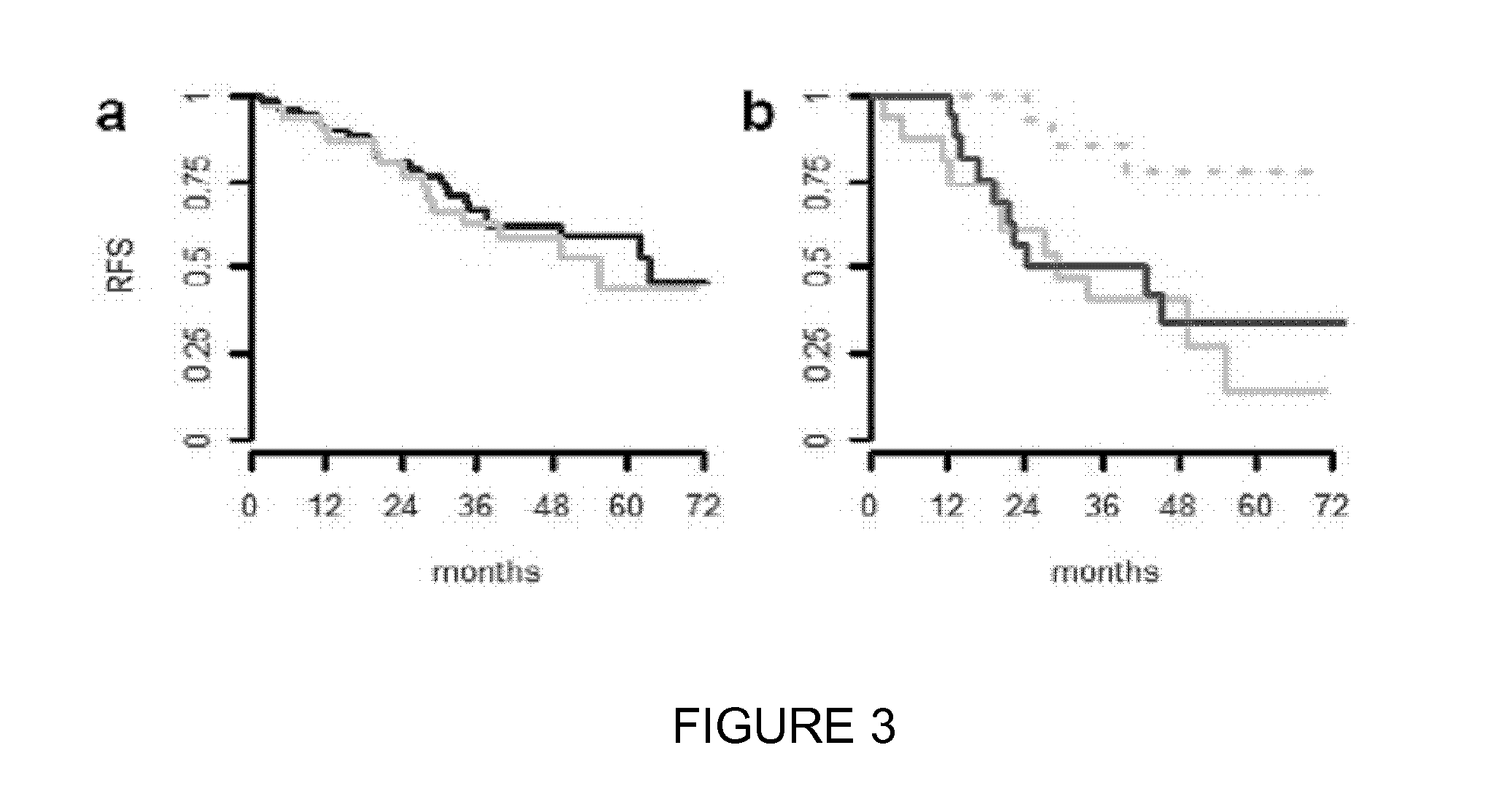Method for Predicting Clinical Outcome of Patients With Non-Small Cell Lung Carcinoma
a clinical outcome technology, applied in the field of predicting clinical outcome of patients with non-small cell lung cancer, can solve the problems of high complexity of treatment choices, controversial utility of adjuvant chemotherapy for stage ib tumors, and limitations of previous studies
- Summary
- Abstract
- Description
- Claims
- Application Information
AI Technical Summary
Benefits of technology
Problems solved by technology
Method used
Image
Examples
example
Prediction of Clinical Outcome in Multiple Lung Cancer Cohorts By Integrative Genomics: Implications for Chemotherapy Selection
Methods
Patients and Tumor Samples
[0059]This study was based on a series of 85 consecutive chemotherapy-naive patients who underwent surgery at the Hôtel-Dieu Hospital (AP-HP, France) between August 2000 and February 2004 for stage IB (pT2N0) primary adenocarcinoma or large cell lung carcinoma of peripheral location. For all cases, pathological slides were reviewed without any information regarding the outcome. Following clinical and pathological parameters were collected: age, sex, tobacco exposure, type of resection, laterality, necrosis, size of the tumor (as measured in macroscopy), histological subtype, differentiation (well, moderate, poor), vessel invasion, visceral pleura involvement; TTF-1 expression. Patients with bronchioloalveolar adenocarcinomas or large cell neuroendocrine carcinomas were excluded from this study. The quality of frozen tissue wa...
PUM
| Property | Measurement | Unit |
|---|---|---|
| endoscopic ultrasound | aaaaa | aaaaa |
| width | aaaaa | aaaaa |
| weight | aaaaa | aaaaa |
Abstract
Description
Claims
Application Information
 Login to View More
Login to View More - R&D
- Intellectual Property
- Life Sciences
- Materials
- Tech Scout
- Unparalleled Data Quality
- Higher Quality Content
- 60% Fewer Hallucinations
Browse by: Latest US Patents, China's latest patents, Technical Efficacy Thesaurus, Application Domain, Technology Topic, Popular Technical Reports.
© 2025 PatSnap. All rights reserved.Legal|Privacy policy|Modern Slavery Act Transparency Statement|Sitemap|About US| Contact US: help@patsnap.com


